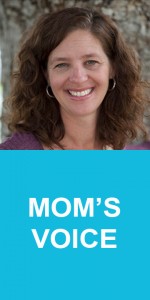Sixty-four schools across the nation were honored by the U.S. Department of Education last week as Green Ribbon Schools, “for their exemplary efforts to reduce environmental impact and utility costs, promote better health, and ensure effective environmental education, including civics and green career pathways.”
Now, our schools can get a report card form the U.S. Department of Education on their carbon footprints. If that doesn’t scare you, wake up and smell the free trade, organic, non GMO coffee in the 13 watt spiral fluorescent lit teacher’s lounge.
I will find time to celebrate the fact that Charles Evans Hughes Middle School in Long Beach dropped their GHG emissions (MTCO2e) to 368, as soon as I am finished grieving the closures of LA Unified school libraries. Or when I begin to see the rampant illiteracy, and overcrowding problems begin to diminish along with those carbon footprints. I guess I shouldn’t be so blue when being green seems to be the new black.
Reading online through the application to be considered a Green Ribbon school seems closer to Soviet era propaganda than a true effort to educate our children.
Take for example question 27 on page 18 about cleaning: “What specific third party certified green product does your school use?” Why do I suspect the next step is having kids report what types of products mom and dad are using at home?
Here’s one that could earn a math ribbon in addition to the green ribbon if answered correctly: “What is the volume of your annual pesticide use per gallon/per student/per year. Describe efforts to reduce use.”
In the 161 page application, many schools boasts about their campus cleanup days. Shouldn’t every day be a campus cleanup day? I was taught to never litter and that wasn’t a part of any program or government assessment; it was just the right thing to do. We had days where we cleaned up – it was part of having pride in your school.
Many of the “Green Ribbon” schools describe their sustainable gardens on campus. One such school, however, also stated that “free breakfast is served in each classroom each morning to every student and all students receive free lunch.”
I was taught there is no free lunch. Perhaps these little scholar turned gardeners should harvest their own breakfasts. Seems the green thing to do.
EPA administrator Bob Perciasepe said, [the] “U.S. Department of Education Green Ribbon Schools are not only cutting costs thanks to energy-saving practices and use of more efficient technology, but they’re also reducing instances of pollution-related illnesses like asthma, a leading cause of student absence.”
Is it just me or should we be afraid – very afraid – that the EPA is in bed with the US Department of Education for any reason? Even a well intended one.
How easy to become an ambassador for all things green with your own handy copy of USGBC Students Guide to Transforming Your Campus, Community and Career, “a step-by-step guide to starting a powerful and functional student group, identifying the greatest needs on campus and creating a campaign to address them.”
Do we really need to identify the “greatest need on campus?” Wouldn’t that be the student? Where is the step-by-step guide to starting a powerful and functional student group addressing the importance of knowledge, education, and learning?
Secretary of Education, Arne Duncan, highlighted how the green schools movement and Green Ribbon Schools is helping school districts save millions of dollars and said “this is one of those things with no downside whatsoever.”
Here’s a little homework assignment reader: I challenge you to think of the downside to a politician stating that a program has “no downside whatsoever.”
Jill Fales is the mother of four and author of “My Laundry Museum & Other Messy Gifts of Motherhood.” Visit her at JillFales.com.





